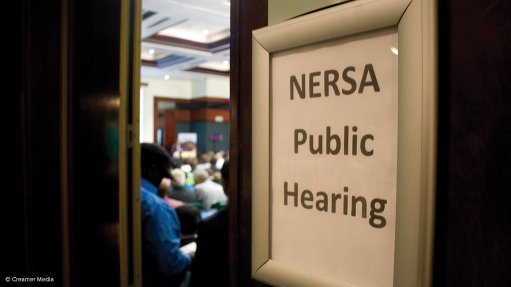
Photo by: Duane Daws
The National Energy Regulator of South Africa (Nersa) will host public hearings between January 18 and February 5 on Eskom’s application to claw back R22.8-billion through the Regulatory Clearing Account (RCA) mechanism of the electricity tariff-setting methodology.
The State-owned utility has submitted an RCA application for the first year, or 2013/14, of the third multiyear price determination (MYPD3), under which Eskom has been granted five yearly tariff increases of 8% until the end of March 2018.
The hearings, which will be held in all nine provinces, form part of Nersa’s adjudication process, which includes a “prudency” review of costs incurred by Eskom over and above that sanctioned for the year.
Hearings will kick off in Cape Town on January 18 and 19 and wrap up in Johannesburg on February 4 and 5. Sessions are also scheduled for Port Elizabeth (January 20), Durban (January 21 and 22), Mmabatho (January 25), Kimberley (January 27), Bloemfontein (January 28), Nelspruit (February 1) and Polokwane (February 3).
Members of the public and stakeholders wishing to make oral presentations would need to submit a request to do so before 16:30 on Wednesday January 13.
The hearings are likely to centre on whether Eskom should be allowed to recoup various costs, including diesel expenses of R8-billion that were incurred during the financial year. The other main component of the RCA relates to a revenue variance of R11.7-billion, owing to lower than anticipated demand during the period.
If approved, the claw-back could result in tariffs rising by nearly 17% from April 1, 2016, instead of the 8% already sanctioned. However Nersa has historically not granted Eskom its full requests, with the utility’s most recent approach for a selective reopening of the MYPD3 having been rejected by the regulator.
That said, following a RCA application for the MYPD2 control period, Nersa granted Eskom a 4.69% upward adjustment to the tariff from April 1, 2015, which resulted in a hike of 12.69% in 2015.
The outcome of the application is also likely to guide a follow-up RCA claim for the 2014/15 financial year, which is likely to be submitted soon after the 2013/14 RCA determination.
Eskom is also considering an early MYPD4 application and is currently also weighing the possibility of applying for a ten-year tariff path. However, it may still make two more RCA applications in parallel in light of an expectation that the MYPD4 determination could involve an 18- to 24-month adjudication process.
It is anticipated that stakeholders will appeal to Nersa to reject or restrict any additional tariff hikes over and above the 8% already sanctioned.
They will argue that a further electricity price increase will dampen the already soggy economic growth outlook and raise inflationary pressures at a time when the risks are already tilted to the upside as a result of rand weakness and the drought.
There will also be strong scrutiny of whether Eskom was prudent in its purchases of additional primary energy, especially diesel, with the open-cycle gas turbines in the Western Cape having been used extensively by the utility in recent years to avoid or lessen load-shedding.
Critics argue that poor maintenance is largely to blame for high levels of coal plant unavailability and that consumers should not be penalised for Eskom’s management failings in this regard.
Eskom has already indicated that it does not anticipate receiving the full R22.8-billion, but it has warned that any marked deviation from the claim could pose a serious risk to the way investors price Eskom debt and perceive the tariff-setting methodology.
Nersa is expected to make its determination before the end of February.